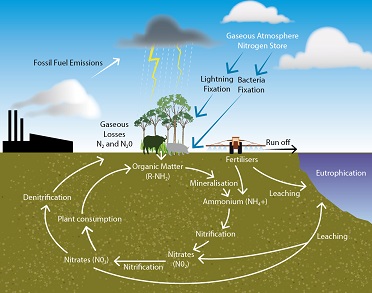Online Course in Environmental Chemistry
- Urban, City, Rural environments
- Air, Water and Soil Contaminants
Understanding environmental chemistry is the first step to managing chemicals in the environment.
Course Content
There are eight lessons as follows:
- Introduction to environmental chemistry and chemistry concepts
- Organic, inorganic and biological contaminants in the environment
- Air pollution and treatment
- Water pollution and treatment
- Soil pollution and treatment
- Environmental chemistry and human health
- Environmental chemistry field sampling and testing
- Sustainability and green chemistry
Course Duration - 100 hours of self paced study

How Plants Can Improve the Environmental Chemistry.
Once waste has contaminated soil, or when it cannot be reduced because there is currently no viable alternative, plants can be used to help mitigate the effects of waste.
Vegetated soil is more capable of removing, degrading or mineralising chemical contaminants then those with little, or no, vegetation. The reclamation of soils contaminated with heavy metals using certain plants (known as ‘hyper-accumulators’) to uptake (some) heavy metals is called ‘phytoremediation’. For this to work, high yielding plants are used for the uptake and harvest - phytoextraction - of chemicals from the soil into harvestable plant tissue.
The relationship between plants, soil microbes, soils and the contaminants in phytoremediation is a complex and intricate process. Plants can take up a contaminant from water or soil which is volatised (i.e. loss of a substance to the atmosphere through evaporation) and/or deposited into plant tissue.
The root system of the plant also plays an important role in decontamination by improving soil conditions so that some contaminants are more easily degraded in the soil through micro-organisms that live in the root zone.
This system is also used to clean up ground-water. However, it must be noted that the process of phytoremediation works best on soils that have low to medium contamination; high contamination will adversely affect the growth of plants as well as the microbial activity within the soils.
The following definitions further outline these processes:
- Phytodegradation: plants are used to uptake, store and then degrade contaminants within their tissue.
- Phytostimulation or rhizodegradation: rhizospheric (root zone) associations between plants and symbiotic soil microbes are used to degrade contaminants.
- Phytovolatilisation: plants are used to uptake contaminants from the soil and then transform and volatilise contaminants into the atmosphere.
- Phytoextraction: plants are used to absorb, translocate and store toxic contaminants from the soil into their root and shoot tissue.
- Rhizofiltration: plants are used to uptake and also store chemicals (and other pollutants) from contaminated water through their roots.
- Phytostabilisation: plants are used to immobilise or bind contaminants into the soil, thereby reducing their bio- availability.